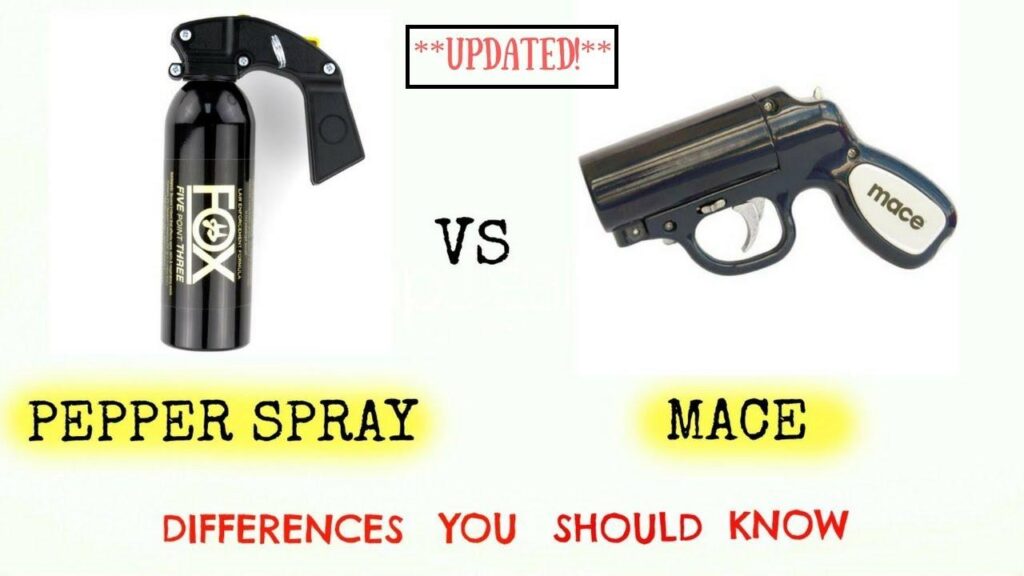Table of Contents
- Overview of Current International Treaties Governing Pepper Spray Usage
- Key Changes and Amendments in Global Pepper Spray Regulations
- Impact of Regulatory Updates on Law Enforcement and Civil Use
- Best Practices for Compliance with Emerging International Standards
- Future Outlook
Overview of Current International Treaties Governing Pepper Spray Usage
International regulation of pepper spray usage hinges on a complex framework of treaties and agreements designed to balance public safety with human rights concerns. While no single global treaty exclusively governs its use, several key international instruments address the deployment and restrictions of chemical agents, among which pepper spray is often classified. The Chemical Weapons Convention (CWC), for example, distinguishes pepper spray as a riot control agent permissible for law enforcement but strictly prohibits it for warfare. Additionally, United Nations guidelines emphasize proportionality and necessity, urging nations to adopt measures aligned with international human rights standards. The result is a patchwork legal landscape that empowers countries to regulate pepper spray within their jurisdictions while adhering to overarching restrictions on excessive or abusive use.
Several regional treaties and conventions also play a significant role in shaping national policies on pepper spray. These include:
- The European Convention on Human Rights (ECHR) – guiding usage by emphasizing the right to security and protection against excessive force.
- The Inter-American Convention on Human Rights – setting standards for law enforcement conduct in the Americas.
- Various bilateral agreements – facilitating cooperation and standardization on pepper spray regulations between neighboring states.
Key Changes and Amendments in Global Pepper Spray Regulations
Recent revisions within international frameworks reflect a significant shift toward more stringent control and standardization of pepper spray use. Governments are aligning their policies to enhance public safety while carefully balancing law enforcement needs and human rights concerns. The amendments emphasize clearer definitions regarding the permissible concentration levels and delivery mechanisms of pepper spray products, ensuring they meet uniform safety standards. Additionally, there’s a stronger emphasis on mandatory training and certification for both civilian and official users to mitigate misuse and accidental harm.
Key updates include:
- Harmonized labeling requirements across borders to improve consumer awareness and compliance.
- Restrictions on cross-border transport of pepper spray, particularly in air travel contexts.
- Enhanced reporting protocols post-incident to ensure accountability and data-sharing between nations.
- Recognition of pepper spray as non-lethal weaponry with clear legal frameworks defining its scope of use in self-defense scenarios.
Impact of Regulatory Updates on Law Enforcement and Civil Use
Recent amendments to international regulations have introduced significant shifts in how law enforcement agencies deploy pepper spray, enforcing stricter protocols to ensure responsible and measured use. These changes prioritize accountability, mandating enhanced training modules that emphasize de-escalation techniques and accurate reporting. As a result, officers are now equipped not only with pepper spray but also with a comprehensive framework that balances effective control with the protection of civil liberties. This development underscores the growing emphasis on minimizing unintended harm, fostering trust between authorities and communities while maintaining public safety.
For the civilian population, updated regulations have brought about clearer guidelines regarding possession, usage, and legal restrictions of pepper spray, varying across jurisdictions but generally moving towards harmonization. Key factors include:
- Licensing requirements: Increased scrutiny to ensure responsible ownership.
- Age restrictions: Implementation of minimum age thresholds to reduce misuse risks.
- Usage boundaries: Defined contexts in which self-defense deployment is lawful.
Best Practices for Compliance with Emerging International Standards
To navigate the evolving landscape of international regulations on pepper spray, organizations must adopt a proactive approach that prioritizes thorough understanding and application of new standards. This begins with continuous monitoring of global treaty developments and national implementations to ensure that policies remain current. Regular training programs for employees, emphasizing legal restrictions and safe handling, help mitigate risks associated with non-compliance. Equally important is fostering transparent communication channels with regulatory bodies, enabling swift adaptation to any amendments or clarifications in legal requirements.
Implementing a robust compliance framework involves integrating best practices such as:
- Conducting rigorous audits to verify that all products and usage protocols meet international criteria.
- Documenting and maintaining compliance records meticulously to streamline inspections and reporting.
- Engaging with industry groups and legal experts to stay ahead of regulatory trends and share insights.
- Developing contingency plans to address potential legal conflicts or product recalls inspired by treaty updates.
By embedding these strategies into operational workflows, entities not only enhance their regulatory posture but also contribute to the responsible and ethical deployment of pepper spray worldwide.
Future Outlook
In conclusion, staying informed about the evolving international treaties regulating pepper spray is crucial for policymakers, law enforcement agencies, and manufacturers alike. As nations continue to navigate the delicate balance between public safety and individual rights, these legal frameworks will undoubtedly shape how pepper spray is produced, distributed, and used worldwide. By keeping a close eye on these developments, stakeholders can ensure compliance while contributing to safer and more responsible practices on a global scale. Stay tuned for more updates as this area of international law continues to evolve.Check Our Other Blogs
- StunGun – Your Trusted Source for Stun Guns, Laws, and Self-Defense Tips
- PepperSprayLaws – Your Trusted Resource for Pepper Spray Information
- StunGunLaws – Your Trusted Guide to Stun Gun Legality and Safety




